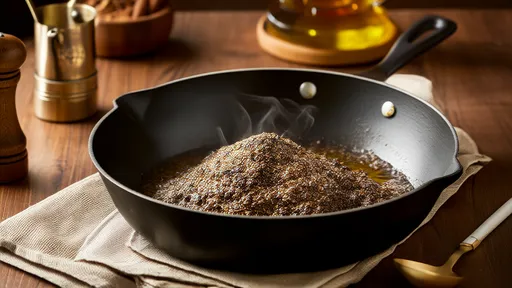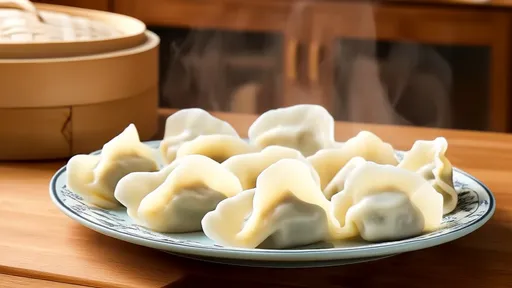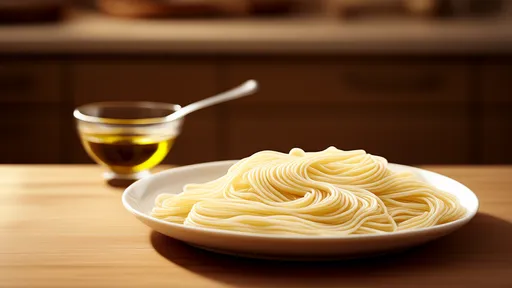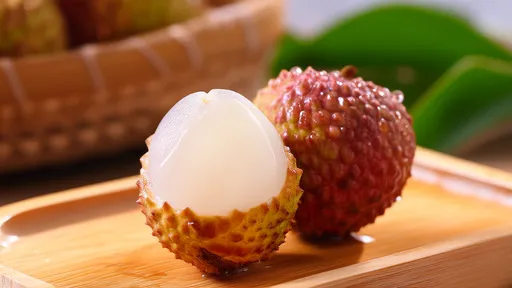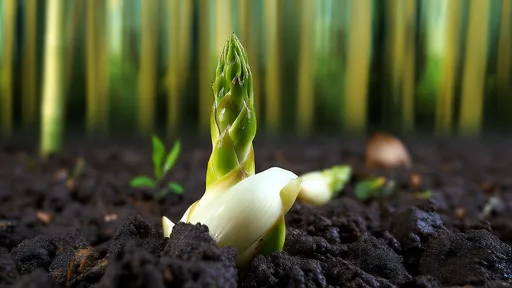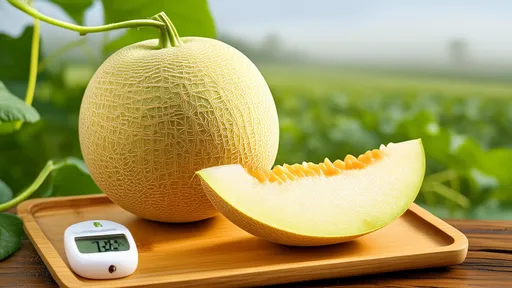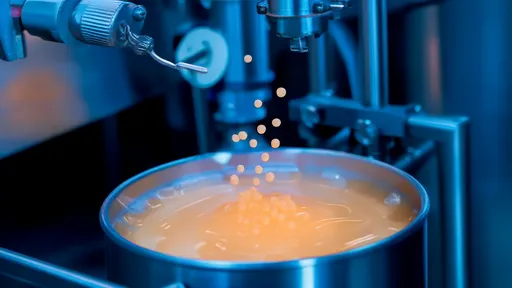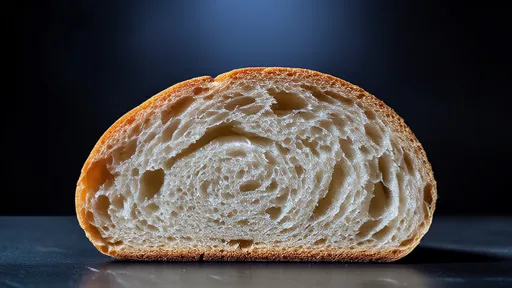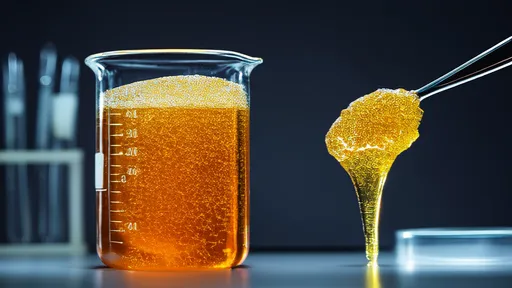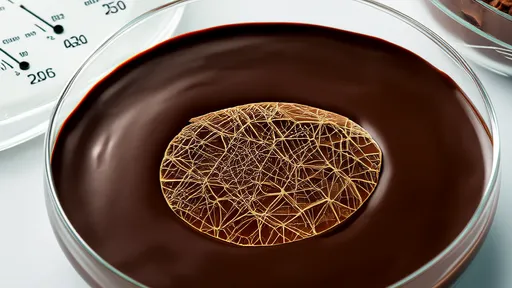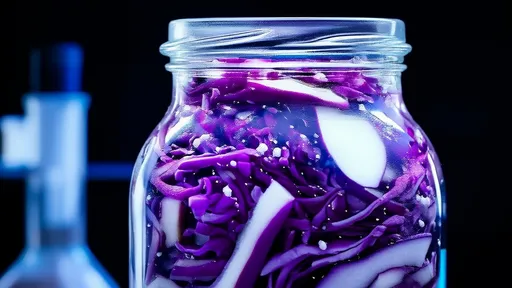The art of making dumplings is a cherished tradition in many cultures, particularly in Chinese cuisine. While the filling often steals the spotlight, the dough wrapper plays an equally crucial role in ensuring the dumplings hold together during cooking. One of the most effective yet underrated techniques for preventing dumpling wrappers from tearing is incorporating egg whites into the dough. This method leverages the science of proteins to create a more resilient and elastic wrapper, capable of withstanding the rigors of boiling or steaming without falling apart.
The Science Behind Egg Whites in Dough
Egg whites are a powerhouse of proteins, primarily albumin, which undergoes fascinating transformations when mixed with flour and water. When kneaded into the dough, these proteins form a network that enhances the structural integrity of the wrapper. The albumin molecules unwind and bond with the gluten in the flour, creating a more cohesive and flexible dough. This protein matrix acts like a microscopic scaffold, reinforcing the wrapper and making it less prone to rupturing during cooking.
Additionally, the water content in the egg whites contributes to the dough's hydration without making it overly sticky. Proper hydration is key to achieving the right texture—too dry, and the dough becomes brittle; too wet, and it turns gummy. The egg whites strike a delicate balance, ensuring the dough remains pliable yet strong enough to encase the filling securely.
Practical Benefits for Home Cooks
For home cooks, adding egg whites to dumpling dough is a simple yet game-changing technique. Unlike commercial stabilizers or additives, egg whites are a natural and accessible ingredient. They don’t alter the flavor of the dumplings but significantly improve their durability. This is especially useful for beginners who might struggle with rolling out thin yet sturdy wrappers. The added elasticity makes the dough more forgiving, reducing the likelihood of tears during shaping or cooking.
Another advantage is the slight sheen egg whites impart to the cooked dumplings. While this is purely aesthetic, it contributes to the visual appeal, making homemade dumplings look as polished as those from a restaurant. The wrappers also develop a slightly firmer bite, which many find more satisfying than overly soft or mushy alternatives.
Cultural and Historical Context
While the use of egg whites in dumpling dough might seem like a modern hack, it has roots in traditional cooking practices. In many Asian cuisines, eggs have long been used to modify the texture of doughs for noodles, pastries, and dumplings. The technique likely evolved as cooks experimented with ways to improve the durability of delicate wrappers, especially for dishes like har gow (shrimp dumplings), where the filling’s moisture can easily compromise the dough.
Today, this method is gaining renewed attention as home cooks seek reliable ways to elevate their dumpling-making skills. Online forums and cooking communities are abuzz with testimonials about the effectiveness of egg whites, often describing them as a "secret weapon" for perfect dumplings. It’s a testament to how traditional wisdom continues to find relevance in contemporary kitchens.
Comparing Alternatives
Of course, egg whites aren’t the only way to fortify dumpling dough. Some recipes call for adding cornstarch or tapioca flour to the wheat flour, which can improve texture but may lack the binding power of proteins. Others rely on salt or vinegar to tighten the gluten network, though these can affect flavor. Egg whites stand out because they address multiple issues at once—strength, elasticity, and hydration—without introducing unwanted tastes or textures.
For those with egg allergies, alternatives like aquafaba (the liquid from canned chickpeas) can mimic some of the properties of egg whites, though the results may vary. Ultimately, the choice depends on individual preferences and dietary restrictions, but for most cooks, egg whites remain the gold standard for foolproof dumpling wrappers.
Step-by-Step Integration into Your Recipe
Incorporating egg whites into your dumpling dough is straightforward. Start by separating the whites from the yolks—reserve the latter for other uses, such as enriching the filling or making custards. For every two cups of flour, one egg white is typically sufficient. Whisk the egg white lightly to break it up before adding it to the flour along with the water. Knead the mixture until it forms a smooth, elastic ball, then let it rest covered for at least 30 minutes to allow the proteins to fully hydrate and relax.
When rolling out the wrappers, aim for uniform thickness to ensure even cooking. The egg-white-enriched dough will feel more supple and less likely to crack at the edges. As you fold and pleat the dumplings, you’ll notice the dough holds its shape better, giving you more control over the final presentation.
Beyond Dumplings: Other Applications
The benefits of egg whites extend beyond dumpling wrappers. They can be used in pasta dough to create silkier, more resilient noodles, or in pastry doughs to prevent sogginess. The principle is the same—the proteins in the egg whites form a protective barrier that enhances the dough’s structural integrity. For anyone passionate about homemade doughs, mastering the use of egg whites opens up a world of culinary possibilities.
In the end, the humble egg white proves that sometimes the simplest ingredients hold the key to solving common cooking challenges. Whether you’re a dumpling novice or a seasoned pro, this small addition can make a big difference in your culinary creations.
The art of unlocking the full potential of spices lies in a time-honored technique: dry-roasting, crushing, and coaxing out their essential oils. This ancient method, passed down through generations of culinary masters, transforms ordinary spices into aromatic powerhouses that elevate dishes to extraordinary heights. The process may seem simple at first glance, but mastering it requires patience, precision, and an understanding of how heat interacts with different spice varieties.
For many home cooks and professional chefs, peeling and cutting yams can be an unexpectedly unpleasant experience. The vegetable, known for its nutritional benefits and culinary versatility, has a notorious side effect – it can leave your hands unbearably itchy. This common kitchen woe has led to numerous home remedies and old wives' tales, but one surprising solution has emerged from modern technology: the microwave.
The art of making dumplings is a cherished tradition in many cultures, particularly in Chinese cuisine. While the filling often steals the spotlight, the dough wrapper plays an equally crucial role in ensuring the dumplings hold together during cooking. One of the most effective yet underrated techniques for preventing dumpling wrappers from tearing is incorporating egg whites into the dough. This method leverages the science of proteins to create a more resilient and elastic wrapper, capable of withstanding the rigors of boiling or steaming without falling apart.
In kitchens around the world, cooks face a common nemesis when preparing pasta: sticky noodles that clump together into an unappetizing mass. While many swear by the traditional method of rinsing cooked pasta with cold water to prevent sticking, a growing number of culinary experts argue that tossing freshly boiled noodles with olive oil proves far more effective. This technique not only preserves the pasta's ideal texture but also enhances its flavor profile in ways cold water simply cannot match.
Guangdong lychee, a jewel of southern China's fruit basket, has long been celebrated for its succulent flesh and floral aroma. Beyond its irresistible taste, recent research has uncovered a hidden treasure within its vibrant red peel—polyphenols with remarkable antioxidant properties. These compounds are quietly revolutionizing our understanding of how this tropical fruit may contribute to human health far beyond basic nutrition.
The high-altitude coffee farms of Yunnan Province have long been celebrated for producing beans with a distinctive flavor profile. Among the many factors influencing taste, altitude plays a particularly crucial role, especially when it comes to acidity. Unlike the bright, sharp acidity often associated with African coffees, Yunnan’s beans exhibit a more nuanced relationship between elevation and tartness—one that defies simple expectations.
The tender crunch of Zhejiang bamboo shoots has long captivated gourmets and scientists alike, their delicate texture standing as a testament to nature's perfect engineering. While chefs praise their culinary versatility, researchers have uncovered a fascinating cellular secret behind their remarkable freshness – turgor pressure. This biological phenomenon, often overlooked in discussions of vegetable quality, holds the key to understanding why these spring delicacies from China's eastern province maintain their youthful crispness long after harvest.
The Hami melon, a jewel of Xinjiang's agricultural bounty, owes its legendary sweetness to a climatic phenomenon as ancient as the Silk Road itself. Nestled in the arid embrace of China's northwest, this golden-fleshed fruit has thrived for centuries under skies that scorch by day and chill by night. What appears as hardship to most crops becomes the secret alchemy transforming ordinary melons into saccharine masterpieces.
The vast fields of Northeast China, stretching across latitudes from 40°N to 50°N, have long been celebrated as the heartland of soybean production. Among the many factors influencing soybean quality, protein content stands out as a critical metric, not just for nutritional value but also for industrial applications. Recent studies have unveiled a fascinating pattern: the protein content in Northeast soybeans exhibits significant variation along latitudinal gradients. This discovery has sparked renewed interest in understanding how geography shapes the very fabric of this agricultural staple.
The process of homogenization in ice cream mix preparation plays a pivotal role in achieving the desired texture, stability, and mouthfeel of the final product. At the heart of this process lies the principle of fat emulsification, where milk fat globules are broken down into smaller, more uniform particles. This not only enhances the emulsion's stability but also ensures a smoother consistency in the ice cream. The science behind homogenization parameters is both intricate and fascinating, as it directly influences the quality of the end product.
The phenomenon of bread staling has puzzled bakers and food scientists for generations. While most consumers associate staleness with dryness, the underlying mechanisms involve complex interactions between starch retrogradation and water migration within the bread matrix. This intricate dance between moisture and crystalline structures ultimately determines whether your morning toast will delight or disappoint.
The formation of rock sugar crystals is a fascinating interplay of chemistry and physics, where the delicate balance of supersaturation dictates the birth and growth of crystalline structures. At its core, this process hinges on the creation of nucleation sites—tiny clusters of molecules that serve as the foundation for larger crystals. The journey from syrup to shimmering rock sugar is anything but straightforward, and understanding the factors that influence nucleation can unlock greater control over crystal size, clarity, and yield.
The art of chocolate tempering is a delicate dance of temperature control, one that hinges on the precise crystallization of cocoa butter. This process is not merely a technical step in chocolate production; it is the very heart of what gives chocolate its signature snap, glossy sheen, and melt-in-the-mouth texture. Without proper tempering, chocolate can appear dull, develop a grainy texture, or fail to release cleanly from molds. The secret lies in understanding how cocoa butter behaves under varying thermal conditions.
The science behind pickling vegetables has fascinated food chemists and home cooks alike for centuries. While the process may seem straightforward – submerging vegetables in brine – the molecular dance occurring within each cell reveals a complex interplay of chemistry and physics. Recent advances in sodium ion detection techniques have allowed researchers to map the distribution of salt throughout pickled vegetables with unprecedented precision, shedding new light on this ancient preservation method.
The phenomenon of "wine legs" or "tears of wine" has captivated drinkers and scientists alike for centuries. When a glass of wine or spirit is swirled, droplets form on the inside of the glass, creating mesmerizing streaks that slowly trickle back down. This elegant display isn’t just a sign of a good drink—it’s a fascinating interplay of fluid dynamics, surface tension, and evaporation.
